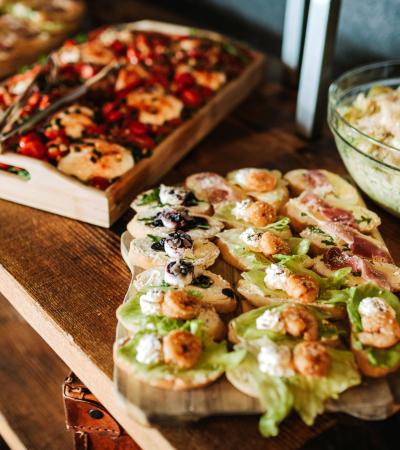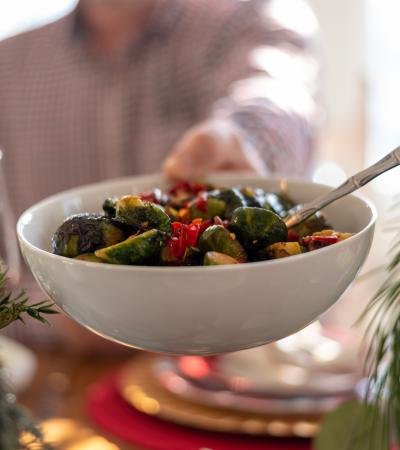The Princeton Public Library hosted a series of cooking demonstrations and cookbook signings during the summer and fall of 2016. Taste of the Market took place on several Thursdays at 11:30 a.m., starting in June and continuing into fall to coincide with the local farmers' market that the library helped found and continue to sponsor. The market takes place on a large plaza just outside the doors to their community room.
In this series, local chefs, cookbook authors and merchants incorporated in season foods from the local farmers that had booths at the Princeton Farmers' Market.
Advanced Planning
Our goal for this series was to encourage people to visit the local farmers' market that the library sponsors on our plaza and to highlight the benefits of eating local and in season. We also wanted to support local merchants and the vendors of the market.
Planning began eight weeks before the first scheduled event when library staff and the manager of the market met to compile a list of local chefs, merchants and cookbook authors that would be appropriate for the series. The intent was to have as much variety as possible and to highlight the items for sale at the market.
It is crucial that those planning this type of series have good knowledge of the local food scene and of what will be in season at various times throughout the summer and fall.
Library staff sent emails to invite the identified list of chefs, authors and merchants and to secure dates. Each email was personalized as the market manager and staff had specific demonstrations in mind for each of the programs. Once the schedule of events was firm, detailed descriptions were created for each program that was to be presented and agreements and payment details were established.
We had identified 10 possible programs for this series and were able quickly secure 9 of the 10 presenters on our wish list. We had to make sure that we had good communication between the library staff, market staff, farmers and presenters so that set-up, rain plans, etc., were all covered.
Marketing
The series was listed in all the regular communication channels utilized by both the library and the Princeton Farmers' Market. A special feature was included in the library's quarterly programming guide, and it was also highlighted in the weekly e-newsletters of both organizations when appropriate. The events were listed on the calendars for both groups and extensive use of social media was made via Facebook, Twitter and Instagram. We also issued press releases to announce the series and for each program as it occurred.
We did direct pitches to local foodie bloggers and reporters to ask them to cover the series, and the response was terrific. We had blog posts written featuring the chefs and their recipes on Princeton Found. The Princeton Sun printed complete stories about every event in their newspaper as well.
Budgeting
We allowed a budget of $50 to $75 per program to buy ingredients for the demonstration and sampling. We did not pay honorariums to the presenters. The cost for this program could be minimized by asking the vendors and farmers to donate items for the sampling.
Day-of-event Activity
The set-up varied depending on the program. For instance, one program was a demonstration of the Big Green Egg and included on-site grilling that needed to be done outside. This set-up required us to make arrangements for the Big Green Egg to be transported and set up several hours in advance and to have a tent to cover the chef in case of rain or excessive heat.
For the cooking demonstrations, we needed to have several tables to give space for cooking, with chairs for the audience. We also had to allow lots of prep time for the chef. The library provided paper goods for the samples and any other items needed by the chef that they could not supply.
The library enlisted two teen volunteers in addition to one staff member for smooth operation of the program. The market manager was also involved and assisted at all the events.
Program Execution
The program went as planned and, in some instances, exceeded our expectations. Attendance at the sessions varied; some programs had more than 50 people in attendance, while others had 25 to 30. Attendance was not always easy to gauge as many of the programs involved being outside at the market and interacting with shoppers as they passed by or stopped at the booth for a bit. The goals of the program were achieved and we plan to repeat it next year.
Advice
Not all libraries have a market at their doorstep, but you can still partner with any local farmers' market and do events either on-site at the market or do the events at the library the day after market day with items purchased at the market.
If you do not have a market to partner with, you could modify this series to be a What's In Season series. Get a chart of what is in season in your area at what times so you can plan properly for the demonstrations. Enlist teen volunteers to help pass out samples, do the set-up and provide extra hands during the demonstration.



